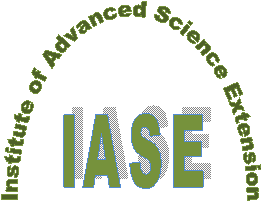International
ADVANCED AND APPLIED SCIENCES
EISSN: 2313-3724, Print ISSN: 2313-626X
Frequency: 12
![]()
Volume 12, Issue 6 (June 2025), Pages: 154-168
----------------------------------------------
Original Research Paper
Logistic caravan: A smart transportation system for green logistics and sustainable practices
Author(s):
Affiliation(s):
1Department of Information Systems and Technology, College of Computer Science and Engineering, University of Jeddah, Jeddah, Saudi Arabia
2Department of Software Engineering, College of Computer Science and Engineering, University of Jeddah, Jeddah, Saudi Arabia
3Department of Computer and Network Engineering, College of Computer Science and Engineering, University of Jeddah, Jeddah 23890, Saudi Arabia
Full text
* Corresponding Author.
 Corresponding author's ORCID profile: https://orcid.org/0000-0003-3770-432X
Corresponding author's ORCID profile: https://orcid.org/0000-0003-3770-432X
Digital Object Identifier (DOI)
https://doi.org/10.21833/ijaas.2025.06.015
Abstract
This study introduces the logistic caravan, a delivery solution based on an advanced method called "Intelligent Penguin Optimizer tuned Logistic Regression (IPO-LR)." This system aims to improve delivery services in rural areas by offering timely, affordable, and environmentally friendly solutions. It uses advanced technologies such as predictive analytics and geospatial mapping to optimize routes, forecast demand, and plan schedules. Key features include joint ordering, real-time tracking, and scheduled deliveries, all designed to improve operational efficiency and customer satisfaction. The system also promotes green practices, such as using optimized routes, electric or hybrid vehicles, and recyclable packaging to reduce environmental impact. With strong data privacy and security measures, the system builds customer trust and supports wide adoption. By addressing current gaps in delivery services, the logistic caravan offers a complete solution that combines lower costs, better efficiency, and sustainability. It supports Saudi Arabia’s Vision 2030 by enhancing logistics in underserved areas. The IPO-LR model shows strong performance, with low error rates (MAE = 0.69, RMSE = 0.81, MAPE = 0.6501), proving its accuracy in route planning and delivery time prediction. The main contributions of this system include better access for remote areas, environmentally responsible logistics, stronger customer loyalty through personalized services, and a scalable model for future delivery systems. The logistic caravan sets a new standard for reliable and sustainable delivery to challenging locations.
© 2025 The Authors. Published by IASE.
This is an
Keywords
Remote delivery, Route optimization, Green logistics, Predictive analytics, Customer satisfaction
Article history
Received 14 January 2025, Received in revised form 24 May 2025, Accepted 30 May 2025
Funding
This work was funded by the University of Jeddah, Jeddah, Saudi Arabia, under grant No. (UJ-21-ICL-9). The authors, therefore, acknowledge with thanks the University of Jeddah's technical and financial support.
Acknowledgment
We thank Mr. Fahad Ezzi Abrah and Dr. Shashi Kant Gupta for their technical recommendations.
Compliance with ethical standards
Conflict of interest: The author(s) declared no potential conflicts of interest with respect to the research, authorship, and/or publication of this article.
Citation:
Khayyat MM, Jambi J, Kutbi N, Garout R, Al-Noumani L, Asiri R, and Balfaqih M (2025). Logistic caravan: A smart transportation system for green logistics and sustainable practices. International Journal of Advanced and Applied Sciences, 12(6): 154-168
Figures
Fig. 1 Fig. 2 Fig. 3 Fig. 4 Fig. 5
Tables
Table 1 Table 2 Table 3 Table 4 Table 5
----------------------------------------------
References (15)
- Aiello B (2022). Software and systems engineering standards: Implementing DevOps best practices. IEEE Communications Society, Washington D.C., USA. [Google Scholar]
- Alharbi A, Cantarelli C, and Brint A (2022). Crowd models for last mile delivery in an emerging economy. Sustainability, 14(3): 1401. https://doi.org/10.3390/su14031401 [Google Scholar]
- Alidaee B, Wang H, and Sua LS (2023). The last-mile delivery of heavy, bulky, oversized products: Literature review and research agenda. Logistics, 7(4): 98. https://doi.org/10.3390/logistics7040098 [Google Scholar]
- Dutta K, Pookulangara S, Wen H, Josiam B, and Parsa HG (2025). Hedonic and utilitarian motivations and the role of trust in using food delivery apps: An investigation from a developing economy. Journal of Foodservice Business Research. https://doi.org/10.1080/15378020.2024.2440677 [Google Scholar]
- Humaidi NFA, Mohd Jamil SN, Gannasin SP, and Samat N (2024). Enhancing users’ satisfaction: Revealing the key factors influencing the usage of online food delivery service applications among university students. Journal of Tourism, Hospitality and Culinary Arts, 16(1): 993-1010. [Google Scholar]
- Kendirli HC and Turan AU (2024). The importance of logistics in the food sector and a research in Corum province: Logistics in the food sector. Journal of Economic Development, Environment and People, 13(3): 37-57. [Google Scholar]
- Ketipov R, Angelova V, Doukovska L, and Schnalle R (2023). Predicting user behavior in e-commerce using machine learning. Cybernetics and Information Technologies, 23(3): 89–101. https://doi.org/10.2478/cait-2023-0026 [Google Scholar]
- Marcon É, Marcon A, Ayala NF, Frank AG, Story V, Burton J, Raddats C, and Zolkiewski J (2022). Capabilities supporting digital servitization: A multi-actor perspective. Industrial Marketing Management, 103: 97-116. https://doi.org/10.1016/j.indmarman.2022.03.003 [Google Scholar]
- Miranda Arias A (2024). PIA02: ISO/IEC 25000 criteria in assessing cloud native application quality. Ph.D. Dissertation, Universidad Cenfotec, San José, Costa Rica. [Google Scholar]
- Paudel R, Tehrani S, and Waris MZ (2024). Factors that influence the behavioral intention of customers toward online food delivery service. TransAmerica Review, 2(2): e24008. https://doi.org/10.62910/transame24008 [Google Scholar]
- Rashidi SF, Olfati M, Mirjalili S, Platoš J, and Snášel V (2025). A comprehensive DEA-based framework for evaluating sustainability and efficiency of vehicle types: Integrating undesirable inputs and social-environmental indicators. Cleaner Engineering and Technology, 27: 100989. https://doi.org/10.1016/j.clet.2025.100989 [Google Scholar]
- Shapiro RD and Heskett JL (1985). Logistics strategy: Cases and concepts. West Publishing Company, Saint Paul, USA. [Google Scholar]
- Shuaibu AS, Mahmoud AS, and Sheltami TR (2025). A review of last-mile delivery optimization: Strategies, technologies, drone integration, and future trends. Drones, 9(3): 158. https://doi.org/10.3390/drones9030158 [Google Scholar]
- Simoni MD and Winkenbach M (2023). Crowdsourced on-demand food delivery: An order batching and assignment algorithm. Transportation Research Part C: Emerging Technologies, 149: 104055. https://doi.org/10.1016/j.trc.2023.104055 [Google Scholar]
- Zubair M, Waleed A, Rehman A, Ahmad F, Islam M, and Javed S (2024). Machine learning insights into retail sales prediction: A comparative analysis of algorithms. In the Horizons of Information Technology and Engineering, IEEE, Lahore, Pakistan: 1-7. https://doi.org/10.1109/HITE63532.2024.10777132 [Google Scholar]

